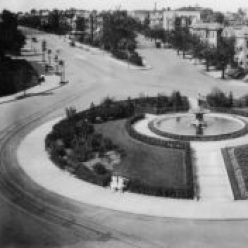Neighbors,
I received a call from Ward Five Council Member VIncent Orange’s office
today, informing me that Council Member Jim Graham is going to hold a
public
hearing regarding the “Disposition of Square 553, Lot 844, also know as
the
Armstrong Adult Educaton Center, Approval Resolution of 2003.” As it
was
explained to me, the purpose of the hearing is to receive guidance as
to
whether Armstrong should be declared a surplus property in the
District’s
inventory. If it is declared a surplus property, then the District of
Columbia Government would be free to sell it, presumably, to the
highest
bidder or to dispose of it in some other way.
I am told that the hearing will take place on Tuesday, March 9, 2004,
in
Room 123 of the John WIlson Building, 1350 Pennsylvania Avenue, N.W.,
commencing at 1:00 p.m. If you would like to sign up to testify at the
hearing or would like to submit a written statement concerning your
point of
view on the matter, the contact person for making those arrangements is
Steven Hernández, Legislative Counsel Sub-Committee on Human Rights,
Asian-PI and Latino Affairs, and Property Management; Office of Ward
One
Councilmember Jim Graham, 202-724-8107.
Although the specific issue before the Sub-Committee concerns the
determination as to whether the city should give Armstrong a surplus
designation, I am certain that Mr. Graham would also be interested in
hearing the many different opinions that neighborhood residents have
with
respect to its next use, i.e., from luxury condos to charter school to
community center.
Best,
Jim Berry
ANC 5C
